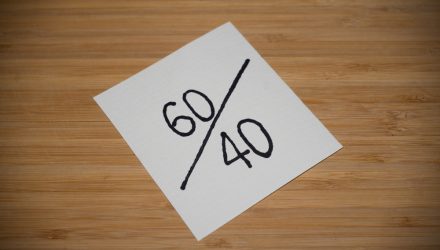The market regime has shifted over the past few years, leaving advisors rethinking about whether the 60/40 portfolio is providing value in client portfolios.
The 60/40 portfolio had long been the cornerstone of asset allocation, previously delivering attractive returns. The portfolio worked well in the period following the great financial crisis, characterized by accommodative central bank policy.
However, as the Federal Reserve began its fight against inflation last year, a new economic regime emerged. The 60/40 portfolio quickly began to show weakness, unable to hold up in a more complex, challenging market environment.
Additionally, stocks and bonds have shown higher levels of correlation in the past two years than the prior 20 –meaning, the 60/40 portfolio might no longer be trusted as a well-diversified portfolio.
The changing market dynamics and ideal asset allocation is a struggle that many advisors are facing. Many advisors have said the traditional 60/40 portfolio had not delivered enough value for clients, leaving advisors needing to find additional potential sources of diversifying returns.
Using Commodities to Add Value
Jeffery Markarian, managing director at Harbor Capital, indicated recently that advisors need to innovate and adapt to the current market opportunities. Anchoring to the past two decades, where the 60/40 portfolio worked fine, is not likely to lead to outperformance in the current environment, according to Markarian.
“Now is the time to be active. It’s time to innovate your client’s 60/40 portfolio. We believe adding a commodities allocation has the potential to be a good diversifier for that,” Markarian explained.
Advisors can start small and still reap the potential benefits of adding commodities exposure. A simple 5% allocation to commodities has the potential to provide diversification and return impacts on a portfolio, he said.
Advisors investing in individual commodities can expect substantial volatility. However, with a balanced approach to commodities, such as the Harbor Commodity All-Weather Strategy ETF (HGER), volatility has the potential to be reduced, according to Markarian.
HGER’s investment process is thoughtfully designed. The fund’s dynamic approach adjusts commodity weights based on different market and inflationary regimes, particularly commodity scarcity and debasement. Additionally, the index allocates to commodities with more favorable roll yield dynamics.
For more news, information, and analysis, visit the Market Insights Channel.
Important Information
Investors should carefully consider the investment objectives, risks, charges, and expenses of a Harbor fund before investing. To obtain a summary prospectus or prospectus for this and other information, visit www.harborcapital.com or call 800-422-1050. Read it carefully before investing. All investments involve risk including the possible loss of principal. For the most current performance, holdings and fees, please click: HGER
All investments involve risk including the possible loss of principal.
The views expressed herein may not be reflective of current opinions, are subject to change without prior notice, and should not be considered investment advice.
HGER: There is no guarantee that the investment objective of the Fund will be achieved. Stock markets are volatile and equity values can decline significantly in response to adverse issuer, political, regulatory, market and economic conditions. A non-diversified Fund may invest a greater percentage of its assets in securities of a single issuer, and/or invest in a relatively small number of issuers, it is more susceptible to risks associated with a single economic, political or regulatory occurrence than a more diversified portfolio.
Commodity Risk: The Fund has exposure to commodities through its and/or the Subsidiary’s investments in commodity-linked derivative instruments. Authorized Participant Concentration/Trading Risk: Only authorized participants (“APs”) may engage in creation or redemption transactions directly with the Fund. Commodity-Linked Derivatives Risk: The Fund’s investments in commodity-linked derivative instruments (either directly or through the Subsidiary) and the tracking of an Index comprised of commodity futures may subject the Fund to significantly greater volatility than investments in traditional securities.
Additional Information
Investing entails risks and there can be no assurance that any investment will achieve profits or avoid incurring losses.
A 60/40 portfolio is generally one that has a 60% allocation to stocks and a 40% allocation to bonds.
Diversification does not assure a profit or protect against loss in a declining market.
Scarcity is when the demand for a good or service is greater than the availability of the good or service.
Debasement refers to lowering the value of currency.
Roll yield is the return from adjusting a futures position from one futures contract to a longer-dated contract.
This article was prepared as Harbor Funds paid sponsorship with VettaFI.
Quantix Commodities LP is the subadvisor for the Harbor Commodity All-Weather Strategy ETF and the Harbor Energy Transition Strategy ETF.
Foreside Fund Services, LLC is the Distributor of the Harbor ETFs
3187009

